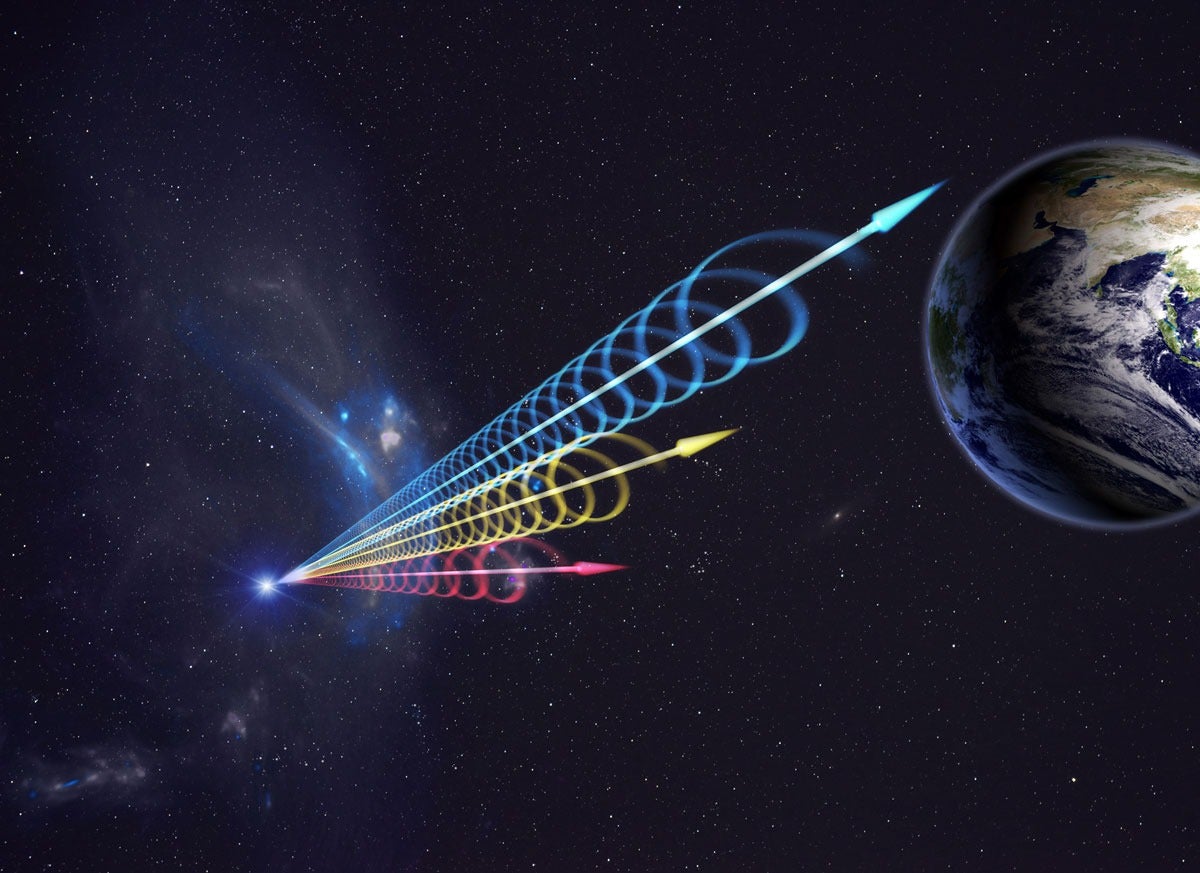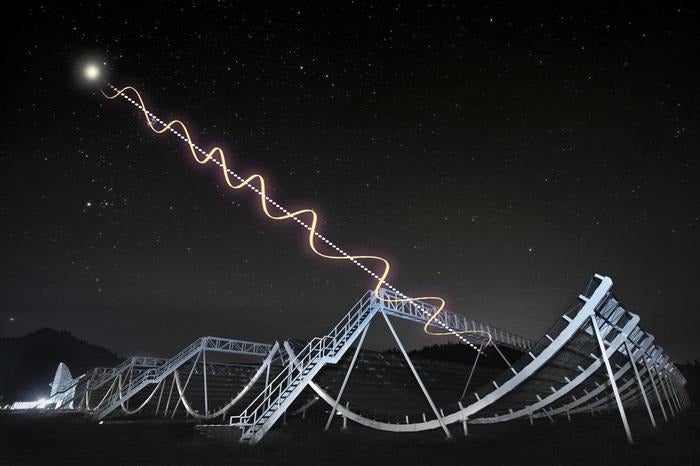
For more than a decade now, astronomers have been puzzling over the origins of so-called fast radio bursts (FRB), which are fleeting yet energy-packed flashes of light in deep space. In fractions of a second, these bursts blast into space as much energy as the Sun radiates in a single day.
Nearly 800 of these enigmatic objects have been discovered flashing and fading all over the sky since the first was discovered in 2007. Most have flashed once and not repeated, while a handful seem to go off thousands of times every day.
“We have no idea what’s causing them,” says Ayush Pandhi of the University of Toronto in Canada. “It’s one of the big mysteries in astronomy right now.”
One idea posits that FRBs may represent powerful magnetic eruptions of long-dead stars known as magnetars. For instance, one FRB with an intriguing and unexpected structure, spotted in 2022, may result from a magnetar “on steroids.” Many other questions linger about their nature, including just where in the sky they originate and whether one-time and recurrent bursters emerge from different types of sources. Now, using observations from a telescope in British Columbia that has observed the vast majority of the mysterious bursts, called the Canadian Hydrogen Intensity Mapping Experiment (CHIME), Pandhi and his colleagues may have gotten a step closer to decoding the kinds of objects that produce FRBs.
Galaxies like our own Milky Way that are moderately dense appear to produce FRBs that burst only once, while more densely packed galaxies, which also flaunt extreme magnetic fields, likely drive hyperactive, repeating bursts of radio energy, Pandhi and his team report in a paper published June 11 in The Astrophysical Journal.
While astronomers are yet to pin down the individual galaxies from which FRBs emerge — a key aspect to understanding the elusive bursts — the latest findings offer theorists more information about the local environments from which the flashes emerge.

Decoding the mysterious origins of fast radio bursts
Unlike other radio telescopes that shift their views to glimpse separate areas of the sky, CHIME isn’t equipped with any moving parts. So, “it just stares up until it sees an explosion and tries its best to figure out exactly where it comes from,” says Pandhi. From CHIME’s fixed view, slices of the sky glide in and out of view every 15 minutes, allowing it to scan the entire sky for both one-time and recurrent FRBs. The telescope easily flags three FRBs every day, says Pandhi.
Each burst ferries snippets of information about everything between Earth and the FRB itself, meaning the brilliant bursts are also encoded with hints about intervening material the light passes through over eons on its way to Earth, providing information about galaxies and intergalactic material that’s otherwise hard to get.
From CHIME’s data, Pandhi and his team compared newly discovered one-time FRBs to previously known hyperactive bursts. Specifically, the team studied the angle at which an FRB’s light is oriented and the extent to which it has shifted, which reveals how much material it has passed through. “This is a new way to analyze the data we have on FRBs,” Pandhi said in a recent press release. “It allows us to reconsider what we think FRBs are and see how repeating and non-repeating FRBs may be different.”
Recurrent bursts seem to come from galaxies much more gas-packed than our own, the team found. Meanwhile, one-shot FRBs appear to come from galaxies that are less dense or have weaker magnetic fields than the Milky Way. However, they “pass through so much stuff that it’s hard to pin down exactly what is causing that rotation,” says Pandhi.
Soon, Pandhi plans to use New Mexico’s Very Large Array to disentangle aspects of FRB rotation influenced by the Milky Way, which may shed more light on FRB host galaxies. Astronomers can then simulate various observed properties of those host galaxies and compare them to our own. “It’s a prediction game,” says Pandhi.
Other astronomers have recently inched closer to finding the origins of FRBs. Earlier this year, for instance, a team using the Hubble Space Telescope narrowed down the location of an FRB that erupted halfway across the universe — the farthest and most powerful burst recorded to date — to a blob-like cluster of galaxies that existed some 5 billion years after the Big Bang. The observation also raised intriguing questions, including whether the radio burst emerged from a single galaxy or a complex, interacting system of as many as seven galaxies potentially in the act of merging.
With highly sensitive telescopes like CHIME and China’s FAST (Five-Hundred-Meter Aperture Spherical Radio Telescope), astronomers are already cataloging hundreds of FRBs, and may soon get closer to decoding their mysterious origins.
“We just need to keep finding more of these FRBs, both nearby and far away, and in all these different types of environments,” Alexa Gordon of Northwestern University in Illinois, who led the Hubble study, said earlier this year in a NASA statement.









